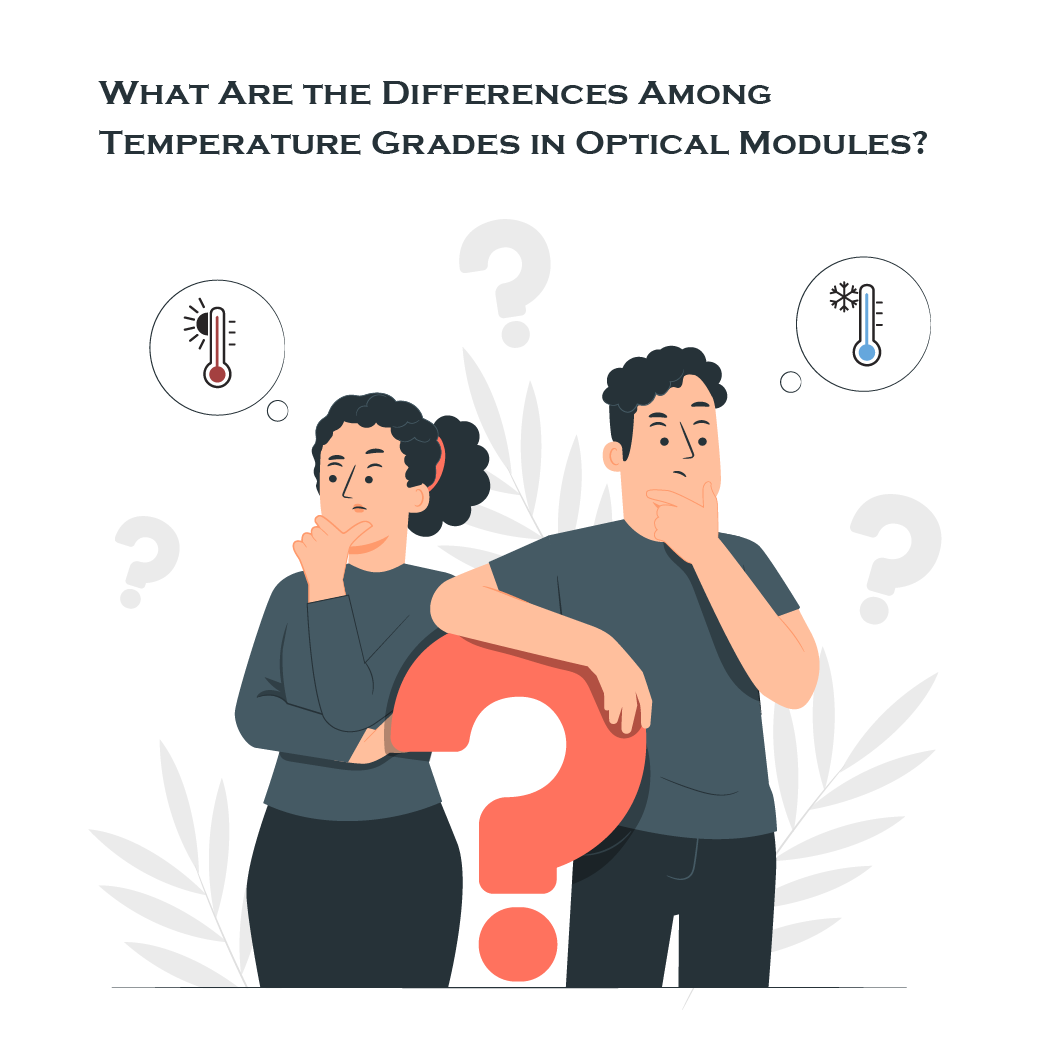What Are the Differences Among Temperature Grades in Optical Modules?
When selecting optical modules, in addition to the most common commercial grade based on operating temperature, we also encounter options such as extended grade and industrial grade. Why are optical modules divided into so many temperature grades, and what are the differences among them?
Differences in Temperature Grades of Optical Modules:
- Chip Tolerance to Temperature:Commercial grade optical modules operate in the temperature range of 0℃ to 70℃.Extended grade operates in the temperature range of -20℃ to +85℃.Industrial grade optical modules have a wider temperature range of -40℃ to 85℃, matching their supported operating temperatures.
- Testing Methods:Commercial grade optical modules undergo normal temperature aging testing.Industrial grade optical modules, on the other hand, undergo high and low-temperature aging testing.
- Price Variation:Industrial grade optical modules incur additional material and manufacturing costs due to physical cooling and temperature compensation. Therefore, under the same parameters such as transmission rate and wavelength, industrial grade optical modules are generally more expensive than commercial grade optical modules.
- Application Scenarios:Commercial grade optical modules are the most common and widely used products in the market, typically applied in enterprise networks, data centers, and server rooms.Extended grade optical modules are designed for relatively harsh environments with significant temperature variations, such as remote mountainous areas and tunnels.Industrial grade optical modules, with even lower temperature tolerance than the extended grade, are often used in conjunction with industrial-grade Ethernet switches. They find applications in industrial Ethernet scenarios, including factory automation, railways, intelligent transportation systems (ITS), power facilities, marine, oil, natural gas, mining, and other industries. Industrial grade optical modules can ensure persistent and stable transmission in challenging working environments.


